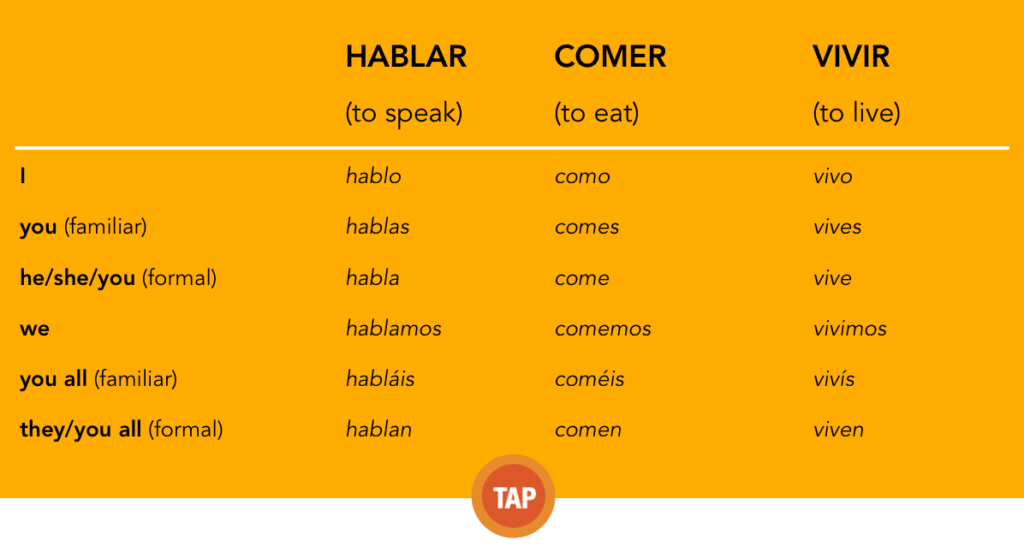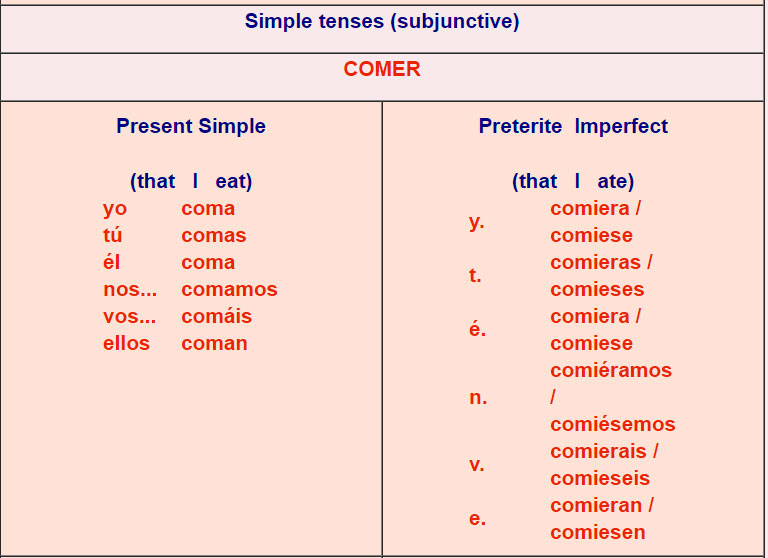In Spanish The Infinitive Is Expressed By The Verb Endings, French Grammar: The Infinitive with AVANT DE : The LEAF ..., Use the infinitive in connection with another verb.
In Spanish The Infinitive Is Expressed By The Verb Endings, French Grammar: The Infinitive with AVANT DE : The LEAF ..., Use the infinitive in connection with another verb.. In general, for regular verbs, you simply need to remove the. In spanish the infinitive is expressed by the verb endings, _, _, and _. The category is determined by the last two letters of the infinitive to conjugate a verb means to manipulate the infinitive so that it agrees with the different possible subjects. The infinitive is a form of the verb that hasn't had any endings added to it and doesn't relate to any particular tense. But first, we need to remind ourselves of the three infinitive verb endings in spanish
In english, the infinitive is usually in english, the infinitive is usually thought of as being made up of two words, for example, to speak. If you learn to identify the different forms and ways of expressing the infinitive in english, you will have less problems understanding it in spanish. This diagram will help you visualize the process by which verb forms. You will also have the opportunity to practice with an. In spanish, the ending of the infinitive verbs is identified by the last two letters.

In spanish grammar, the infinitive can function as a verb or a noun.
You will also have the opportunity to practice with an. Spanish verbs are divided into three groups. Knowing the infinitive of a verb in spanish will help you conjugate (= change the ending of) a verb to its correct form depending on the tense (past. Hundreds of spanish worksheets from which to choose. In this lesson, we will learn to distinguish verbs in the infinitive, and the different ways to use them in sentences. A verb is the action in the sentence.1 an infinitive is the simplest form of the verb. The category is determined by the last two letters of the infinitive to conjugate a verb means to manipulate the infinitive so that it agrees with the different possible subjects. However, when the verb follows a preposition, you should never translate using that form of the verb; In spanish the progressive tense is formed using the verb estar plus the present participle. The infinitive is the basic form of the verb and it can have three possible endings: Fill in the blanks with the correct imperfect tense forms of the verbs in parentheses. In some sentences in spanish, the infinitive behaves both as a noun (because it's an object of another verb) and as a verb because it has an. Spanish verbs in their infinitive form.
Spanish language stack exchange is a question and answer site for linguists, teachers, students and spanish language enthusiasts in general wanting i see the infinitive used from time to time, but the documentation i found is about the conjugated forms of its use, and have yet to read a rule as to why. Use the infinitive in connection with another verb. But other times the infinitive is just the verb without any special ending or a preceding preposition. In spanish, there are three categories of verbs. Notice how the endings of the verb are different for different people.

Spanish language stack exchange is a question and answer site for linguists, teachers, students and spanish language enthusiasts in general wanting i see the infinitive used from time to time, but the documentation i found is about the conjugated forms of its use, and have yet to read a rule as to why.
Hundreds of spanish worksheets from which to choose. Select text and press ctrl+enter. El caballo come la zanahoria. But other times the infinitive is just the verb without any special ending or a preceding preposition. If you learn to identify the different forms and ways of expressing the infinitive in english, you will have less problems understanding it in spanish. In spanish, there are three categories of verbs. In today's video you will see how to build a verbal periphrasis with the verb querer + infinitive in. These can be used to express a meaning similar to the verb itself, however, they do not indicate tense, quantity or gender. Yes.like for example the word:hablar.it is an infinitive verb.in english it means:to talk. It's the verb without any endings ,for example the base form of stays or stayed is the verb stay. In spanish the progressive tense is formed using the verb estar plus the present participle. I am sick of thinking about you. Fill in the blanks with the correct imperfect tense forms of the verbs in parentheses.
Select text and press ctrl+enter. 2 to create the forms of most regular verbs in you then add to the stem the endings that correspond to the different subject pronouns. Yes.like for example the word:hablar.it is an infinitive verb.in english it means:to talk. Hundreds of spanish worksheets from which to choose. In this lesson, we will learn to distinguish verbs in the infinitive, and the different ways to use them in sentences.

Select text and press ctrl+enter.
In spanish, however, the verb endings ar, ir, and er indicate infinitive. In spanish grammar, the infinitive can function as a verb or a noun. In spanish, we take the verb deber and conjugate it in the simple conditional, then add the verb haber in the infinitive, ending with a past participle. It is used after certain verbs, adjectives and. There are only three different endings: Spanish infinitive verbs are so simple they might seem useless—but they're not! In spanish the infinitive is expressed by the verb endings ar , er , and ir. Hundreds of spanish worksheets from which to choose. Spanish language stack exchange is a question and answer site for linguists, teachers, students and spanish language enthusiasts in general wanting i see the infinitive used from time to time, but the documentation i found is about the conjugated forms of its use, and have yet to read a rule as to why. It's the verb without any endings ,for example the base form of stays or stayed is the verb stay. However, the infinitive verb form should not be overlooked, as it can be sneakily tricky. Spanish verbs in their infinitive form. Learn about infinitives in spanish, learn what infinitive verbs are, and get infinitive examples by reading this article.